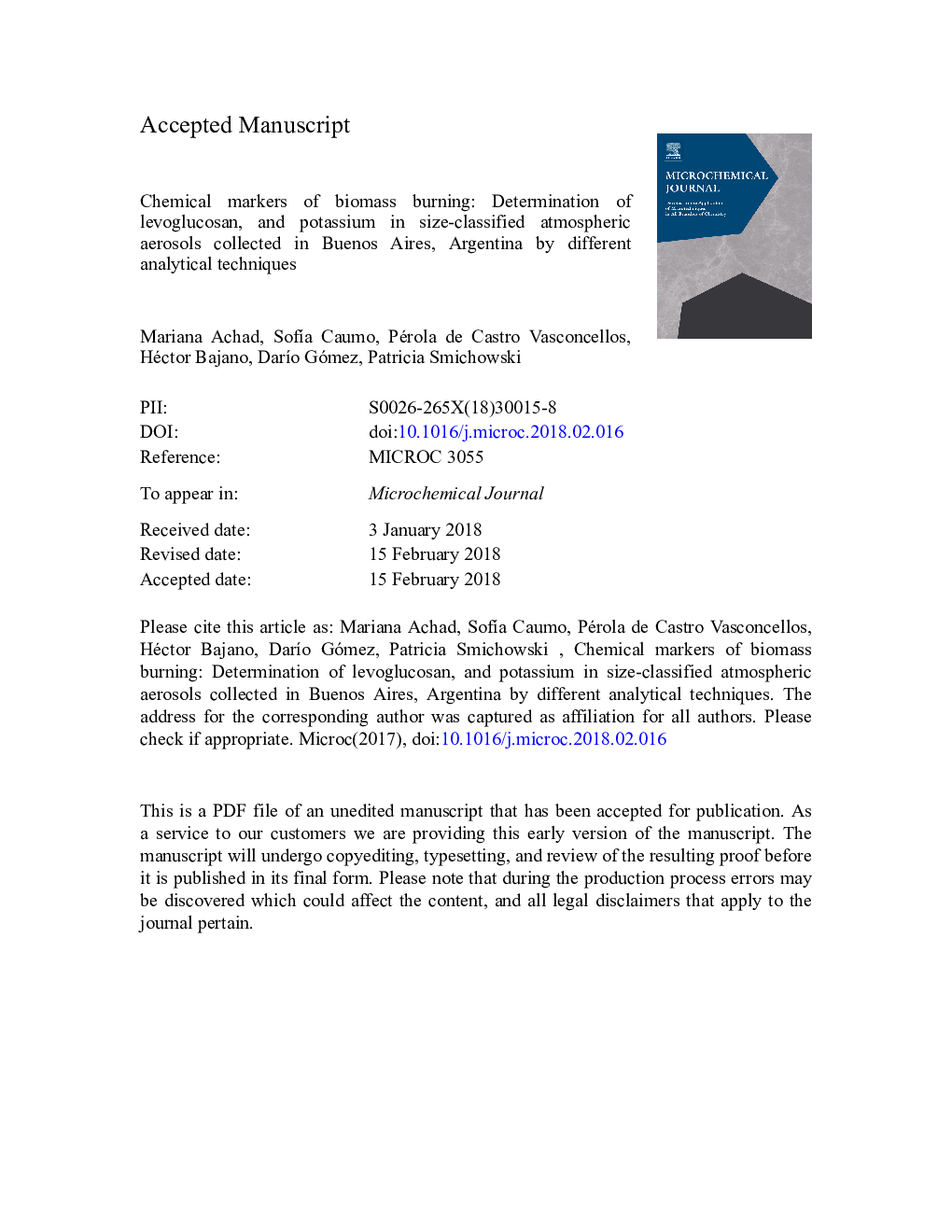| Article ID | Journal | Published Year | Pages | File Type |
|---|---|---|---|---|
| 7640738 | Microchemical Journal | 2018 | 33 Pages |
Abstract
A study concerning the identification and quantification of key chemical markers of biomass burning namely, levoglucosan and potassium in size-fractionated airborne particulate matter was conducted. To perform a complete characterization of PM2.5 and PM10 samples collected in Buenos Aires, Argentina black carbon, metals and metalloids were also determined. Due to the particularly complex chemical composition of atmospheric aerosols several analytical techniques were employed. Levoglucosan was extracted from filters and determined by gas chromatography-mass spectrometry (GC-MS). It was detected in a wide range of concentrations, from 2.0 ng mâ3 to 4.90 μg mâ3 (PM2.5) and 6.0 ng mâ3 to 1.86 μg mâ3 (PM10). Equivalent black carbon concentrations were determined by reflectromety and varied between 3.3 and 8.9 μg mâ3. Other tracer of biomass burning such as Potassium was determined by flame atomic absorption spectrometry (FAAS). Potassium was mainly detected in the coarse fraction varying from <0.56 to 3.51 μg mâ3. In addition, 17 minor, major and trace elements (Al, As, Ba, Cr, Cu, Fe, Hg, Mg, Mn, Ni, Pb, Sb, Se, Sn, Ti, V and Zn) were determined by plasma-based techniques namely, inductively coupled plasma optical emission spectrometry (ICP OES) and inductively coupled plasma-mass spectrometry (ICP-MS). Mean concentrations (in ng mâ3) of metals and metalloids varied from 1.57 (Hg) to 1688 (Al) for PM2.5 and 1.5 (Al) to 1502 (Hg) for PM10.
Keywords
Related Topics
Physical Sciences and Engineering
Chemistry
Analytical Chemistry
Authors
Mariana Achad, SofÃa Caumo, Pérola de Castro Vasconcellos, Héctor Bajano, DarÃo Gómez, Patricia Smichowski,
